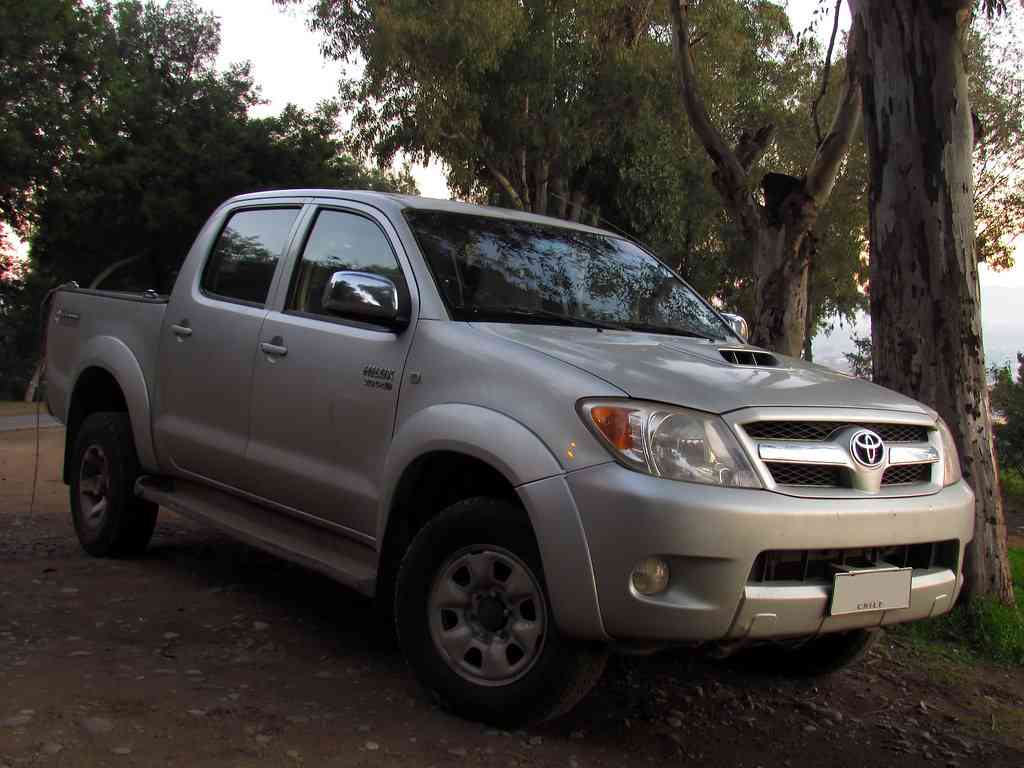
LAST month I got a call from Lindezi Travel and Tours. They invited me to come and choose whatever double cab I wanted from their huge inventory of available rental cars.
They requested that I make the reservation at least two days beforehand. I took a 2014 Toyota Hilux Raider last week. Between a 2021 Toyota Hilux GD6 and a 2022 Isuzu DMax, the 2014 Hilux Raider D4D three-litre was my pick. I could not help but choose the older Hilux. “Who in their right mind chooses an older model of a vehicle over a newer one”, I can hear you saying.
Well, I was just smitten by the stimulating appearance. It has big, hulking wheels and has a very masculine appearance.
The last thing you want to do when you hire a vehicle is to spend a lot of time at the car rental offices if your papers are in order. Within 20 minutes I was out of Lindezi with my D4D and a smile on my face after being diligently served by Tonderai Mangwende, their sales executive under the watchful eye of their general manager, Clement Gwari. I took it into the thickets of Karoi farming and mining community.
In Zimbabwe, the Toyota Hilux has long served as the industry standard for bakkies, and when the Raider model debuted back in 2004–2005, it completely revolutionised the double cab market. It took advantage of Toyota's hegemony in the double cab market.
Toyota wanted to improve the Hilux's usability without sacrificing its toughness. Prices decreased concurrently on a cost-per-feature basis as a result of economies of scale.
Undoubtedly, a stylish body added a "frills" element that was not there before, changing the vehicle's appearance. But as long as the under-the-skin stability is still present, what is wrong with eye-catching looks?
How would one characterise the Hilux? It has been in existence for about 55 years. Here in Southern Africa, more than a million units have been sold throughout that time.
- War over super car stuck in river
- Chombo’s trial date moved
- Kaukonde in car supply storm
- All set for Balance Up and Drive Campaign bash
Keep Reading
The Hilux is still one of the most well-liked cars in the world and the best-selling car in Southern Africa. It is produced in a variety of nations and offered in 140.
The Hilux I chose has a 2005-introduced platform. If it were 2014, I would describe then all new Hilux as follows: For those who may have been away from the planet for a while, the front features a new grille, headlights, fog lights, and bumper as well as a new bonnet with a distinct centre bulge.
Raiders have new over fenders, SRX has new mirrors. Those with steel wheels get new plastic wheel covers, while higher-end models have new alloy rims.
New lights are located around the back, and the Raiders and SRX receive a clear-lens stop light situated in the middle of the lockable tailgate. The console, audio system, and instrument panel in the interior have all been updated. This would be applicable to the model in 2014, for it was a game changer.
A height-adjustable driver's seat and automated headlamps are additional upgrades for double-cab Raiders, while vehicle stability control (VSC) is added to the list of safety features on three- and four-litre models to go along with ABS, brake assistance, and EBD. Several versions now have higher braked tow capacities, with this one being rated at 1840 kg. A wheel on the side of the seat is used to modify the seat's height. It drops easily, but most drivers would have to lift their butts off the cushion to wind it back up. For passengers at the back of the cabin, pockets on the seat backs offer additional storage in addition to the required cup holders, door bins, and bottle holders.
The head and knee room ratings for tall passengers are 100%, while the foot space rating (driver's seat down) is an eight out of 10. Mechanical locks are used for children.
A sizable centre bin, two open trays, two open slots under the music panel, and a respectably sized glove box all serve as storage for passengers in the front. The steering wheel has buttons for the phone, computer, and sound, while a separate stalk houses the cruise control.
The wheel can only be adjusted up and down. Every time the engine is started, the push-button-controlled single channel air conditioner returns to the recirculation mode by default. The inclusion of a USB as standard equipment was a nice touch that is unusual for cars at this price point. I am very certain that this was at the height of the popularity of USB connections. Back then, these were pricey choices and it served as a selling point. Thanks to Chinese automakers who include these frills as standard in their vehicles, modern technology has brought us into a world where the majority of these extras are now considered the norm. The customer has benefited greatly since other automakers were forced to emulate the lead manufacturer.
The interior of the cabin is tastefully furnished with hard plastic panels on the dash and a mixture of black and light grey. On the music centre trim and door knobs, there is a lot of bright silver that not everyone would find appealing.
The hard ride of the previous generation Hiluxes was pronounced, however the seventh generation has substantially reduced harshness because its front suspension was overhauled. It can undoubtedly compete with more advanced double cabs. It handled the Karoi country roads expertly. When it travelled the pothole-filled Harare to Karoi highway, it seemed a little jerky in some places.
Driving on a bumpy road, when you are at least expecting it, is nearly more comfortable than this. Engineers might certainly explain the phenomenon, but I would much rather just enjoy the trip without knowing why it happens.
However, Hilux 4x4s are purchased for their off-road prowess, and I would never contest what they are capable of. For the Dakar Rally, the route is set using D-4Ds with minor suspension adjustments and unique wheels. As driven off South American showroom floors, they are otherwise dead standard. There is no disputing that. In the Karoi region, I hosted my own Dakar Rally.
Verdict
The seventh generation was characterised by ups and downs after six extraordinarily prosperous generations during which they frequently outsold their closest rivals two to one. It received a lot of praise in its early years because it was the first significant redesign in nearly two decades and by far the most contemporary Hilux.
It has contemporary common rail turbocharged diesel engines and much reduced noise and vibration, but it was also the first Hilux that was not produced in Japan. Despite the fact that this was perhaps one of their most popular models, it had a number of problems that hurt their reliability record and caused them to lose ground to the always increasing competition.
I believe that because the Hilux model was succeeding so well, the competition was motivated to develop better double cabs.
There is no disputing the D4D's continued popularity in Zimbabwe. It has a tremendous following that approaches a phenomenon and a stellar reputation. It is a popular item on the second hand market to the point where, when it comes to purchasing decisions, it competes with its descendant, the GD6.






